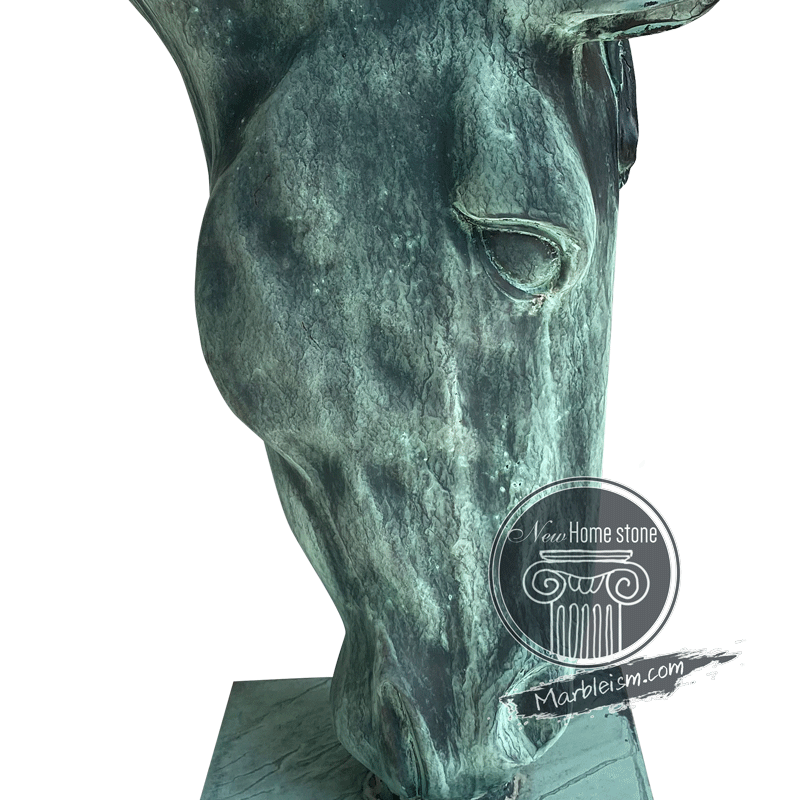Bronze Sculpture Maintenance

(Check out: Bronze sculptures)
Bronze metal can last a very long time.
Metal in general is typically thought of as lasting even longer than the sturdiest marble stone:
for example, in the public eye, a building made of metal is modern, even futuristic,
and can last indefinitely, while stone, although stunning in its beauty, famously erodes and fades over time…
Even if the time is full centuries.
The most famous marble sculptures of human history are all being painstakingly protected and continuously restored.
Therefore, in terms of longevity, bronze sculptures must come out on top, right?
They have their own unique beauty and iconic aesthetic.
One might hope you could make your bronze sculpture selection the end of your journey, but ultimately, as with all fine art,
a collector’s job is never done!
Maintenance of modern bronze sculptures is as important as the most famous marble masterworks.
Fortunately, there is almost endless information available for how to maintain the beautiful bronze sculptures you might be seeing for sale.
Maintenance of bronze sculptures has a lot in common with restoration, but the two processes are not identical.
For one thing, the definitions differ in subtle but critical ways:
restoring a bronze sculpture involves repairing damage that has already been done,
while maintenance involves preventing said damage.
As the old adage goes, “prevention is better than cure!”
The three greatest enemies against your bronze statue are the classical elements:
rain, sunlight, and the ceaseless accumulation of dust over time pose a threat to your sculptures
if they are left exposed without periodic care and a reasonable dose of vigilance.
The best way to protect against these elements, as you might suspect, is proper storage.
If your bronze statue is designed for installation outdoors or in a garden, where sunlight, dust,
and moisture are all abundant, then an awning or roof will protect against some exposure,
while the rest must be periodically cleaned and repaired.
Keeping your bronze sculpture for the garden
in the shade to protect against light might not do much against the natural accumulation of dust and grit,
but it will drastically reduce the amount of cleaning necessary.
If your bronze sculpture is indoors, this makes things a bit easier,
although classic bronze sculptures might look better outdoors.
Inside, your bronze sculpture can be stored inside a glass display to protect against
both dust and accidental bumps and knocks.
Certain special varieties of glass can provide further protection against ultraviolet radiation
and other kinds of harmful light, and of course moisture should also not be an issue inside such a display.

(Check out: Bronze sculpture of dancer)
Just as they differ with different kinds of elemental exposures, maintenance techniques also differ for differing times of the year. Depending on what season you’re in, your outdoor bronze sculptures will be facing different threats, and different elements. Sculptures that belong in the garden are especially important to safeguard.
During spring, it is important to wax and buff your statue in preparation for the hotter months ahead.
Waxing and buffing is a process that essentially involves providing your statue with a thin and protective coat of sheen,
and then polishing it rigorously to give it a smooth, finished gleam.
This will protect the statue from water and dust in general,
but it will also give it a shield against the burning summer sun later on in the year.
When waxing your statue, be sure to give it a thorough cleaning as well, using gentle water and a bristled brush to
remove dirt from the surface and from within crevasses.
In summer, once the weather has peaked, the best thing to do for your statue is to keep it nice and clean. In July or August, when the heat is at its greatest, there is no need to wax and buff your statue, but since it is being protected from the sun already, you must keep it clean of other contaminates such as patina and corrosion.

(Check out: Bronze Horse Head)
As the weather begins to cool again, another waxing and buffering pass goes highly recommended.
Not only will your wax coat be starting to thin out at this point, but it will also be necessary to
defend against a whole new slew of elements: mainly the cold, and an increased rate of harsh winter
moisture which is slower to evaporate and at constant risk of freezing, and therefore sticking and expanding.
The best time to prepare for this kind of weather is in autumn, when it’s late enough that you are not wasting
a wax coat that is still whole and intact, but also early enough for freezing weather to not have hit yet.
Regardless of when or for what you are cleaning your statue, a few universal rules are always in place:
Mainly,
be gentle at all times. Bronze is a very sturdy metal, but when you are dealing with complex chemical reactions
and applications of force over long periods of time, no substance is indestructible.
Avoid harsh chemicals like chlorine,
fertilizer, and bug spray, as well as overly aggressive scrubbing or polishing.
Not only could these chemicals hurt the bronze, but it could also affect the green patina film without removing it.
Bird droppings should be washed off immediately upon being noticed.
Remember: taking care of your bronze statue should, above all, be a pleasure.
You should find joy in taking care of these immaculate sculptures that mean so much to you.
When you found your perfect piece of art for sale, you entered into a symbiotic relationship where the
sculpture provides you with mental stimulation and happiness, and you in turn provide it with proper cleaning and protection.
Feel free to conduct further research, contact professionals, and have fun!
Click here for more Modern Bronze Sculptures